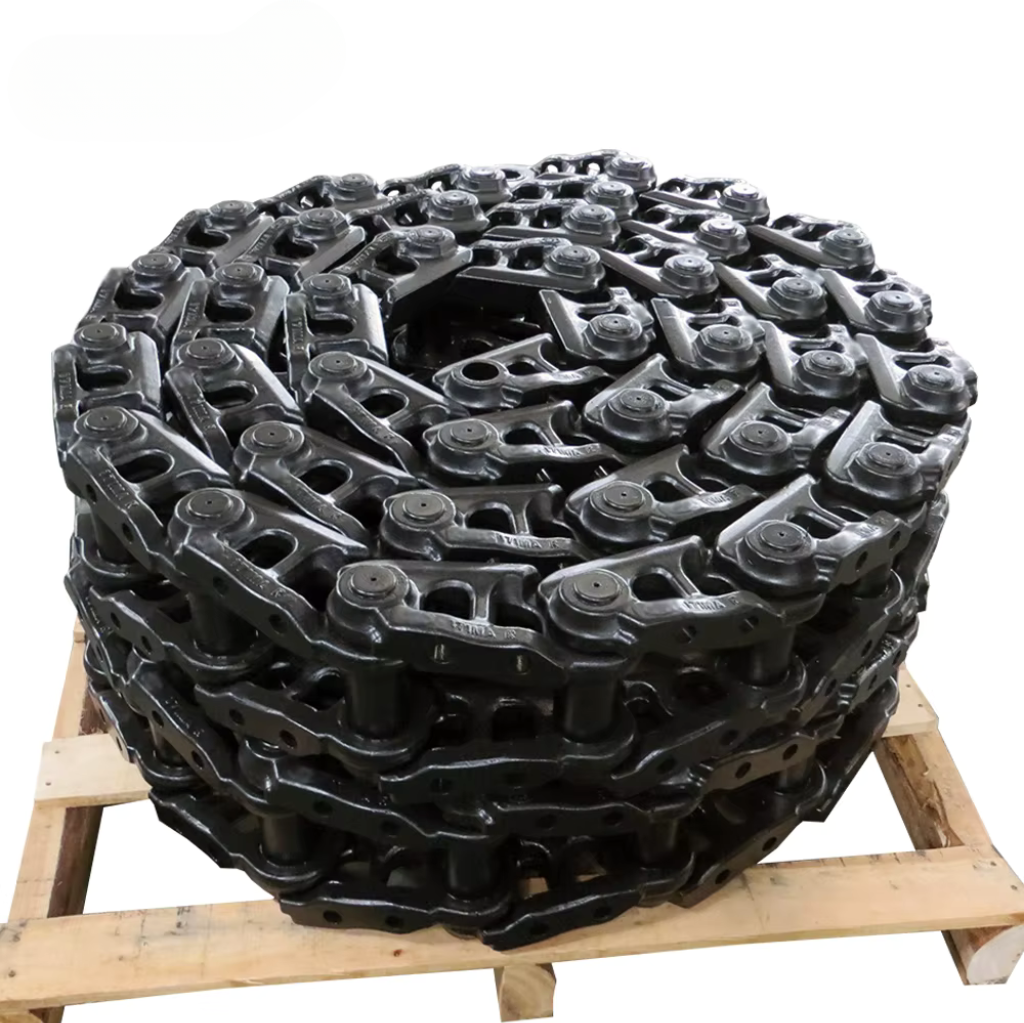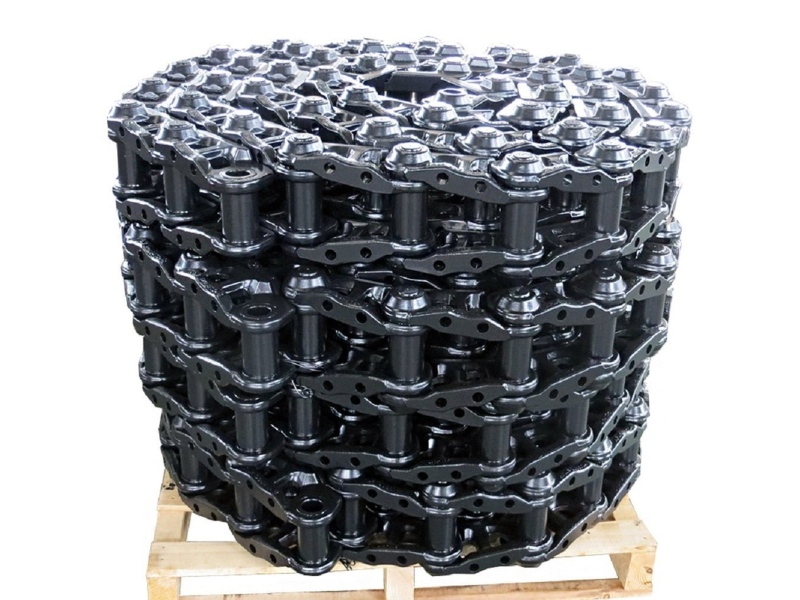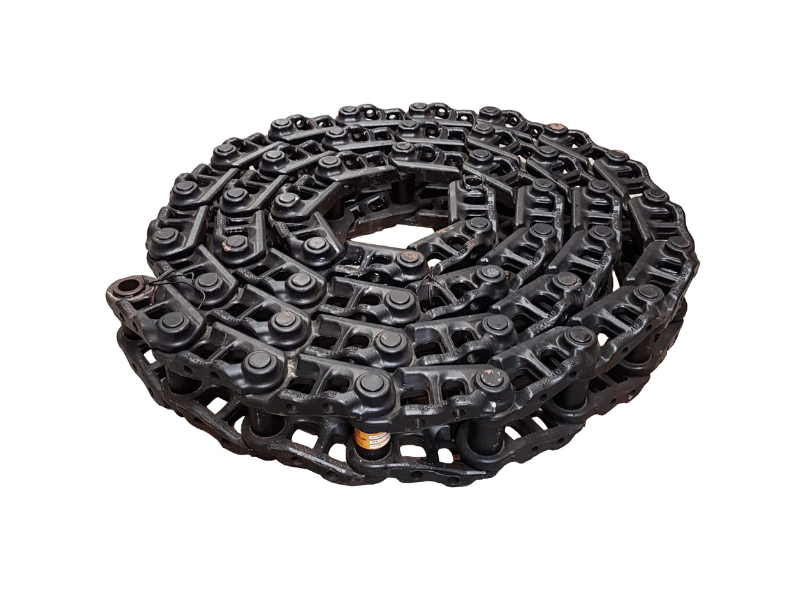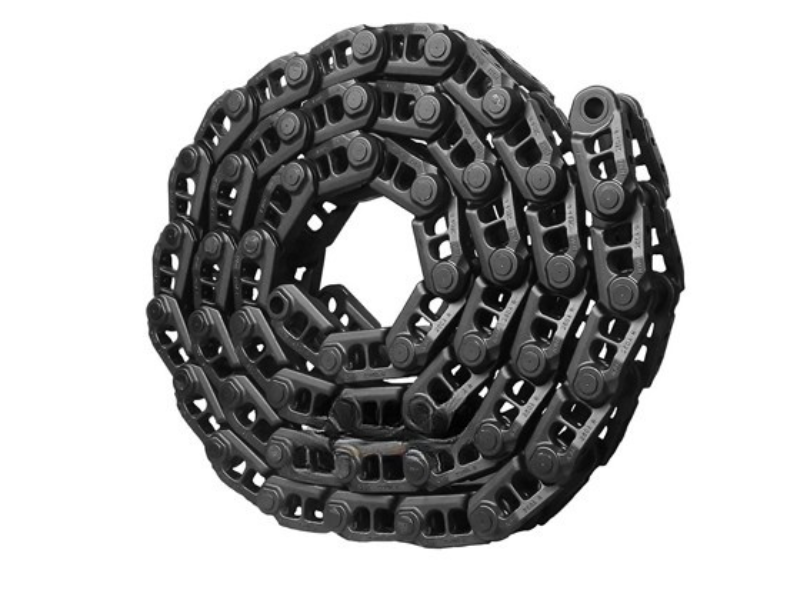
The Excavator Track Link Assembly in India is a vital undercarriage component that connects the track shoes to the machine, ensuring smooth movement, stable traction, and even load distribution. Built from high-grade alloy steel with advanced heat treatment, it offers excellent resistance to wear, impact, and abrasion. Designed for heavy-duty applications, it delivers durability, reliability, and longer service life in challenging terrains.
An Excavator Track Link Assembly is the undercarriage chain system made of steel links, pins, bushings, and shoes that drive the machine forward. When paired with a Triple-Shank Ripper, it becomes vital for handling extreme stress.
It ensures:
Load absorption while ripping hard ground or rock
Strong traction & stability to prevent slippage
Durability against constant impact and abrasion
Smooth mobility across uneven terrain
Simply put, the track link assembly provides the strength and stability that allow an excavator with a Triple-Shank Ripper to perform heavy ripping work efficiently and reliably.
The Triple-Shank Ripper boosts excavator mobility by breaking up hard ground and reducing digging resistance. Its three-point design allows smoother forward movement, better traction, and stability in tough terrains. By loosening material before excavation, it improves digging efficiency, reduces fuel use and bucket wear, and minimizes strain on the hydraulics. The result is faster operation, higher productivity, and longer machine life.

The Triple-Shank Ripper is built from high-strength, wear-resistant steel, designed to handle extreme ripping forces. Its key components include:
Main Frame: Heavy-duty box-type structure with reinforced welds for maximum durability.
Shanks: Three high-tensile alloy shanks, spaced for balanced penetration in tough ground.
Ripper Teeth: Replaceable, heat-treated tips for efficient cutting and easy maintenance.
Mounting Bracket: Precision-fitted ears, pins, and bushings for secure attachment to excavators.
Reinforcements: Wear plates and ribs in high-stress zones for extended service life.
Finish: Shot-blasted, coated, and painted for corrosion and abrasion resistance.
Standard Triple-Shank – Versatile for medium soils, gravel, and light rock.
Heavy-Duty – Reinforced for hard rock, frozen ground, and abrasive materials.
Adjustable/Removable Shank – Converts to single or double shank for deeper penetration.
Narrow-Frame High-Penetration – Focused force for trenching, quarrying, and mining.
Wear-Resistant Steel & Replaceable Tips – Longer life and easy maintenance.
Optimized Shank Geometry – Curved/V-shaped for smoother penetration and fuel efficiency.
Modular Frames – Easy to swap or upgrade shanks.
Shock-Absorbing Mounts – Protects excavator from vibration.
Quick-Coupler Compatibility – Faster attachment changes.
The Triple-Shank Ripper is built to fit a wide range of excavators, from 8 to 80+ tons, with sizes matched to each machine’s breakout force and hydraulic power. It is compatible with pin-on mounts and quick couplers, with pin diameter, spacing, and ear width tailored to OEM specifications.
Designed for all major brands—Caterpillar, Komatsu, Hitachi, Volvo, Hyundai, JCB, Doosan, and more—the ripper can be supplied as an OEM replacement or a custom aftermarket fit. Shank length, tooth style, and mounting brackets can be customized to suit specific applications.
Proper fitment ensures maximum penetration, reduced fuel use, and longer component life, while maintaining operator safety and machine efficiency.

Choosing the right Triple-Shank Ripper assembly ensures maximum efficiency and durability. Here’s what to consider:
Excavator Size & Capacity: Match the ripper to your machine’s tonnage and hydraulics to avoid stress or underperformance.
Ground Conditions: Use reinforced shanks for rock/frost; standard setups work for softer soils.
Shank & Tooth Design: Look for proper spacing, replaceable wear tips, and secure locking systems.
Build Quality: High-strength, wear-resistant steel with reinforced gussets ensures long life.
Maintenance: Prefer bolt-on/pin-on designs with easy-to-source wear parts.
Compatibility: Ensure fit with couplers, pins, and hydraulic specs.
Cost Efficiency: Balance upfront cost with durability and reduced downtime.
Daily Check: Inspect shanks, teeth, bolts, and pins for wear or damage.
Lubrication: Grease all pivot points regularly.
Teeth & Shanks: Replace worn teeth; check shanks for cracks or bending.
Frame: Look for fractures, fatigue, or debris buildup.
Poor Penetration → Worn teeth or wrong angle → Replace teeth, adjust angle.
Shank Damage → Overloading or worn tips → Replace shank, use sharp teeth.
Loose Bolts/Pins → Vibration → Tighten/replace, use thread-lock.
Weak Hydraulics → Low pressure or seal leaks → Check pressure, replace seals/hoses.

When choosing assemblies for an excavator triple-shank ripper, the difference between premium (OEM) and aftermarket options can directly impact performance and costs.
Material Strength: Premium assemblies use high-grade, heat-treated steel for durability and wear resistance. Aftermarket options may wear faster or fail under heavy loads.
Fit & Compatibility: Premium parts match OEM tolerances, ensuring proper alignment and reduced stress on the ripper frame. Aftermarket fits can vary, leading to misalignment and premature wear.
Performance: Premium shanks and teeth deliver smoother penetration, faster cycle times, and lower fuel use. Aftermarket designs often compromise on tooth geometry, requiring more passes.
Service Life: Premium parts last longer in tough jobs like quarrying or frozen ground. Aftermarket ones may need frequent replacements, raising downtime.
The Triple-Shank Ripper is designed to fit a wide range of 20–80 ton excavators, compatible with leading brands like Caterpillar, Komatsu, Volvo, Hitachi, and JCB. It can be mounted via direct pin-on or quick coupler systems for flexible use.
Custom options include shank length, spacing, and tooth profiles to suit different terrains—whether breaking rock, frozen ground, or compacted soil. Operators can also choose reinforced shanks, wear protection, or replaceable teeth for longer life in demanding applications.
With custom fabrication and retrofit solutions, even older or non-standard machines can be equipped, ensuring every excavator gets a perfect fit for maximum ripping efficiency.
For excavators fitted with a Triple-Shank Ripper, track assemblies face extreme stress from ripping through rock, frozen ground, and compacted soil. Modern upgrades make them stronger, more reliable, and easier to maintain.
Heavy-Duty Links & Pins – Forged links, heat-treated pins, and sealed bushings resist shock loading and wear.
Enhanced Track Shoes – Wider, reinforced shoes provide better grip and stability on tough terrain.
SALT & Heavy-Duty Options – Sealed, lubricated tracks and hardened bushings extend service life.
Hydraulic Tensioning – Automatic systems keep tracks properly aligned and reduce derailment risks.
Wear-Resistant Materials – Hardened alloys and coatings increase durability against abrasion.
Smart Monitoring – IoT sensors track wear in real time for predictive maintenance.
Modular Components – Faster replacements mean less downtime.
1. What is it used for?
Breaking compact soil, frozen ground, shale, and soft rock.
2. Can it work in all soil types?
Yes, but best in medium to hard ground. For very tough rock, use a single-shank ripper.
3. When to choose triple shank?
For faster coverage and productivity in moderately tough materials.
4. Does it reduce digging power?
No, it redirects breakout force for penetration.
5. What excavator sizes fit?
Typically 15–50 ton machines (check compatibility).
6. How often replace shank tips?
When worn or blunt, usually after heavy use in abrasive soils.
7. Is maintenance complex?
No—inspect, lubricate, tighten bolts, and replace wear parts regularly.

Excavator Rock Bucket | Excavator Skeleton Bucket | Excavator Trapezoidal Bucket | Excavator Soil Bucket | Excavator Loader Bucket | Excavator Single-Shank Ripper | Excavator Triple-Shank Ripper | Excavator Track Link Assembly | Excavator Tooth Points | Excavator JCB Teeth & Side Cutter | Excavator Idler | Excavator Sprocket | Excavator Lower Roller | Excavator Undercarriage | Excavator Track Group | Excavator Bolts | Excavator Rock Bucket in Chennai | Excavator Skeleton Bucket in Chennai | Excavator Trapezoidal Bucket in Chennai | Excavator Soil Bucket in Chennai | Excavator Loader Bucket in Chennai | Excavator Single-Shank Ripper in Chennai | Excavator Triple-Shank Ripper in Chennai | Excavator Track Link Assembly in Chennai | Excavator Tooth Points in Chennai | Excavator JCB Teeth & Side Cutter in Chennai | Excavator Idler in Chennai | Excavator Sprocket in Chennai | Excavator Lower Roller in Chennai | Excavator Undercarriage in Chennai | Excavator Track Group in Chennai | Excavator Bolts in Chennai | Excavator Rock Bucket in India | Excavator Skeleton Bucket in India | Excavator Trapezoidal Bucket in India | Excavator Soil Bucket in India | Excavator Loader Bucket in India | Excavator Single-Shank Ripper in India | Excavator Triple-Shank Ripper in India | Excavator Track Link Assembly in India | Excavator Tooth Points in India | Excavator JCB Teeth & Side Cutter in India | Excavator Idler in India | Excavator Sprocket in India | Excavator Lower Roller in India | Excavator Undercarriage in India | Excavator Track Group in India | Excavator Bolts in India
TEAM. All Rights Reserved. Developed by Pixel Tech.